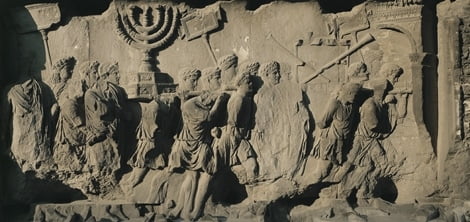
 I suppose it might be good for us to understand the Egyptian Hieroglyphics, but it doesn’t really excite me. I have two other things that I am much more interested in understanding. Most of all, You. You are the one I want to understand.
I suppose it might be good for us to understand the Egyptian Hieroglyphics, but it doesn’t really excite me. I have two other things that I am much more interested in understanding. Most of all, You. You are the one I want to understand.
Before I got to know You I probably would have been interested in the Rosetta Stone and a lot of things, but now that I know You, there is nothing in this world that actually matters to me. I just wait on Jesus because I’m ready to move on to a better life.
But while I’m still here on earth, the other thing I would like to understand, is women.
Anyway, let’s look at…
Hosea 13
Ephraim’s Doom

1 When Ephraim spake trembling, he exalted himself in Israel; but when he offended in Baal, he died.
“When Ephraim spake” – in accordance with Jacob’s blessing (Gen 48:10-20), Ephraim became a powerful tribe from which came such prominent leaders as Joshua and Jeroboam I.
“Died” – wages of sin was death (Rom 6:23), and the end of the nation was at hand.
2 And now they sin more and more, and have made them molten images of their silver, and idols according to their own understanding, all of it the work of the craftsmen: they say of them, Let the men that sacrifice kiss the calves.
“Men…kiss the calves” – this phrase calls to mind the calves (and all sacrifices made to them) set up by Jeroboam to win the allegiance of the northern tribes in Israel.
“Kiss” – show homage to.
3 Therefore they shall be as the morning cloud, and as the early dew that passeth away, as the chaff that is driven with the whirlwind out of the floor, and as the smoke out of the chimney.
4 Yet I am the LORD thy God from the land of Egypt, and thou shalt know no god but me: for there is no savior beside me.
5 I did know thee in the wilderness, in the land of great drought.
6 According to their pasture, so were they filled; they were filled, and their heart was exalted; therefore have they forgotten me.

7 Therefore I will be unto them as a lion: as a leopard by the way will I observe them:
13:7-8 – the Lord, preciously pictured as a shepherd would attack like the wild beasts that often ravaged the flocks.
8 I will meet them as a bear that is bereaved of her whelps, and will rend the caul of their heart, and there will I devour them like a lion: the wild beast shall tear them.
9 O Israel, thou hast destroyed thyself; but in me is thine help.
10 I will be thy king: where is any other that may save thee in all thy cities? and thy judges of whom thou saidst, Give me a king and princes?
“Where is any other that may save thee…?” – help is only from the Lord, not from kings. The prophet likely alludes to the royal assassinations of his day.
11 I gave thee a king in mine anger, and took him away in my wrath.
12 The iniquity of Ephraim is bound up; his sin is hid.

The Israelites lived in small villages in the hill country of central Canaan, sharing the land and many cultural attributes with other Canaanite inhabitants.
13 The sorrows of a travailing woman shall come upon him: he is an unwise son; for he should not stay long in the place of the breaking forth of children.
“A travailing woman” – their helpless situation was comparable to that of a woman in child birth who cannot deliver the child and consequently dies.
14 I will ransom them from the power of the grave; I will redeem them from death: O death, I will be thy plagues; O grave, I will be thy destruction: repentance shall be hid from mine eyes.
“Death” – the personified reference is to the death of the nation. Paul applies this passage to resurrection (1 Cor 15:55).
15 Though he be fruitful among his brethren, an east wind shall come, the wind of the LORD shall come up from the wilderness, and his spring shall become dry, and his fountain shall be dried up: he shall spoil the treasure of all pleasant vessels.
“He be fruitful” – in Hebrew a wordplay on Ephraim (meaning “fruitful”). The drought-brining east wind is here a figure of Assyria, an instrument of the Lord. Assyria invaded the northern kingdom in 734 B.C., then crushed it and exiled its people in 722-721.
16 Samaria shall become desolate; for she hath rebelled against her God: they shall fall by the sword: their infants shall be dashed in pieces, and their women with child shall be ripped up.
Deciphering Hieroglyphs:
The Rosetta Stone

His philological works laid the foundation of the science of Egyptology where he partly deciphered the Hieroglyphs on the Rosetta Stone by showing the original identity of the enchorial [i.e. Demotic] with the sacred characters [i.e. hieroglyphic].Ancient Egyptian inscriptions mystified modern historians until the Rosetta Stone was discovered in 1799 during Napoleon’s invasion of Egypt and its Egyptian text was deciphered.
The stone—inscribed in 196 B.C. during the reign of King Ptolemy V of Egypt—contained the same text in Greek (the official language of the Ptolemaic dynasty), hieroglyphs (the original Egyptian script), and demotic (a cursive Egyptian script derived from hieroglyphs).
Nevertheless, deciphering the hieroglyphs took two decades.
English Egyptologist Thomas Young achieved an early breakthrough in 1814 by identifying Ptolemy’s name as a cartouche (a set of hieroglyphs contained within an oval) at several places in the text.
French linguist Jean-Francois Champollion expanded on Young’s work in 1822–1824 and cracked the code by determining that some hieroglyphs represent objects or concepts while others are phonetic, representing syllables in the spoken language.

He continued where Thomas Young had left off and completed the deciphering of the hieroglyphics on the Rosetta Stone and that’s how we can understand ancient Egyptian today.
The decree appears in three scripts: the upper text is Ancient Egyptian hieroglyphs, the middle portion Demotic script, and the lowest Ancient Greek.
Because it presents essentially the same text in all three scripts (with some minor differences among them), it provided the key to the modern understanding of Egyptian hieroglyphs.
The Rosetta Stone:
What does it say?

The Rosetta Stone is a text written by a group of priests in Egypt to honor the Egyptian pharaoh. It lists all of the things that the pharaoh has done that are good for the priests and the people of Egypt.
…Karnak.
Visits: 0
